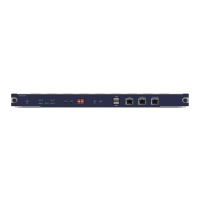Chapter 9 Link Protocol Configuration
Confidential and Proprietary Information of ZTE CORPORATION 135
Note: Router uses PPP (PAP) to verify identity of the other
side (peer). This means other side (peer) must present
its username/password to the local device for verification.
3. To configure username and password for PPP (PAP)
authentication use ppp pap sent-username <username>
<password> command in interface configuration mode as
shown in
Table 159.
TABLE 159 PPP USER-PASSWORD COMMAND
Command
Format
Command
Mode
Command Function
ppp pap sent-
username
<username>
<password>
Interface
This configures the PAP
username and password
that are sent when the local
router is authenticated by
the peer router in the PAP
mode
Result: This configures the PAP username and password that
are sent when the local router is authenticated by the peer
router in the PAP mode.
Note: This is username and password used by local router to
authenticate PPP peer. When peer sends its PAP username
and password, local router checks whether that username
and password are configured locally. If there is a successful
match, the peer is authenticated.
4. To setup PPP link with peer router, use ppp open command
in interface configuration mode as shown in
Table 160.
TABLE 160 PPP OPEN COMMAND
Command
Format
Command
Mode
Command Function
ppp open Interface
This takes initiative in
setting up a PPP link with
peer router
Result: This sets PPP link with peer router.
Note: This enables outbound PAP authentication. Local
router uses username and password that is specified by ppp
pap sent- username command to authenticate it to a remote
device. The other router must have this same
username/password configured using the username
command described above.
Important! If one-way authentication is used, this
command is only necessary for router initiating call. For two-
way authentication this command must be configured on
both sides.
E
ND OF STEPS

